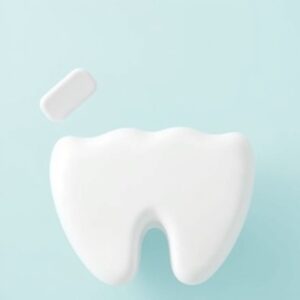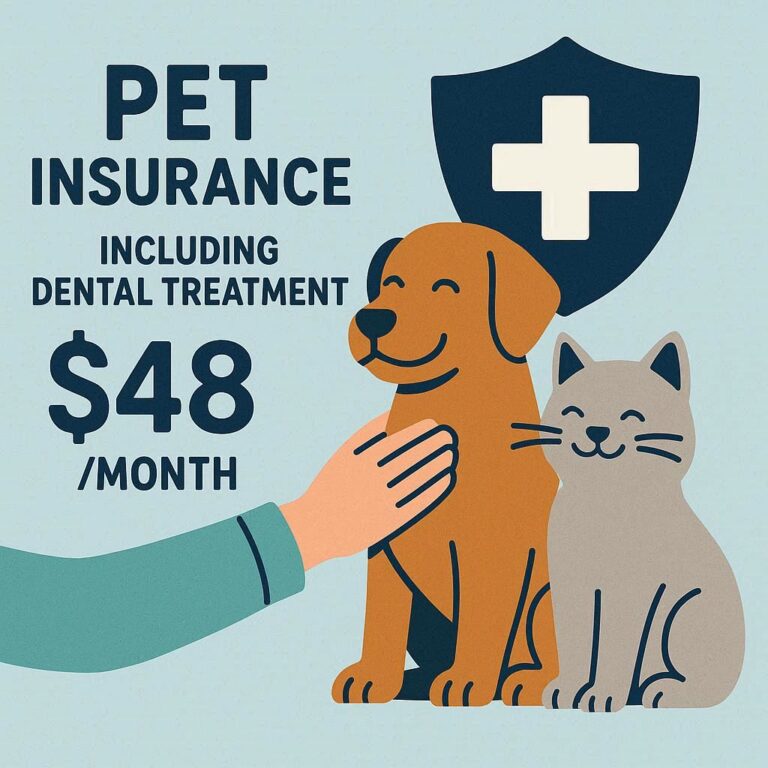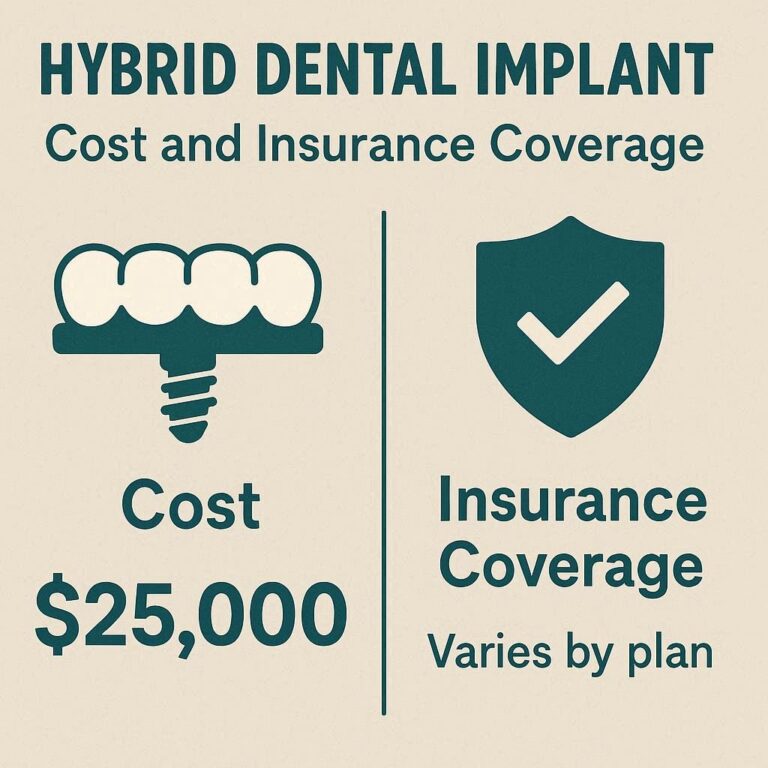A Comprehensive Guide to Dental Scaling Costs Without Insurance
- On
- InDENTAL INSURANCE
The moment your dentist leans in, points to the series of dark triangles on the X-ray, and uses the words “bone loss” and “gum disease,” a familiar dread sets in for millions of uninsured Americans. It’s not just the clinical diagnosis that induces anxiety; it’s the immediate, looming financial question: “How much is this going to cost?” When the recommended treatment is a dental scaling and root planing—a “deep cleaning”—the financial fear can be as paralyzing as the health concern itself. For the nearly 70 million Americans without dental coverage, this procedure represents a significant, often unexpected, financial burden, forcing difficult trade-offs between essential health and other pressing life expenses.
This article is not merely a list of prices. It is a definitive guide, a financial roadmap, and a source of empowerment for anyone facing the prospect of paying for periodontal therapy out-of-pocket. We will dissect the complex factors that determine the final bill, from the microscopic details of the procedure to the macroeconomics of your local dental market. We will explore not just the cost of the treatment itself, but, more importantly, the far greater cost of avoiding it. Our mission is to transform this daunting financial challenge from an insurmountable obstacle into a manageable investment in your long-term health and financial well-being. By the end of this guide, you will be equipped with the knowledge and strategies to navigate this process with confidence, ensuring that the health of your gums—and your wallet—remains secure.

Table of Contents
Toggle2. Demystifying the Procedure: What Exactly is Dental Scaling and Root Planing?
To understand the cost, one must first understand the complexity of the service being rendered. A routine dental cleaning, or prophylaxis, is a preventive measure designed for healthy mouths. It cleans the visible crowns of the teeth, above the gumline. Dental scaling and root planing (SRP), however, is a therapeutic procedure for active disease—namely, periodontitis.
Periodontitis is a chronic inflammatory condition where bacterial plaque and calculus (tartar) have migrated below the gumline, forming pockets between the tooth and gum. The body’s immune response to this infection starts to break down the very bone that anchors your teeth. SRP is the gold-standard, non-surgical treatment to halt this process. It is a world apart from a standard cleaning in both technique and objective.
The procedure is typically broken down into two main components, often performed per quadrant (one-fourth of the mouth):
-
Scaling: This is the meticulous process of manually or ultrasonically removing plaque, calculus, and bacterial toxins from the tooth surfaces below the gumline. Using specialized instruments, the hygienist or dentist must work blindly, by tactile feel, to debride the root surfaces within the periodontal pockets, which can be several millimeters deep. This requires immense skill, patience, and time to ensure all deposits are removed without damaging the soft tissue.
-
Root Planing: Following scaling, root planing smooths the roughened root surfaces. This is a critical step, as a smooth root is less likely to attract and harbor new bacteria, allowing the gum tissue to reattach to the tooth more effectively and reducing pocket depth.
This is not a “one-size-fits-all” appointment. It is a precise, therapeutic intervention that often requires local anesthesia for patient comfort, multiple appointments (often splitting the mouth into two or four sessions), and a significant amount of the clinician’s time and expertise. Recognizing it as a medical procedure for an active disease is the first step in rationalizing its associated cost.
3. The National Cost Landscape: Averages, Ranges, and the Reality of Paying Out-of-Pocket
So, what is the financial damage? National averages provide a starting point, but the range is vast, reflecting the variables we will explore in subsequent sections.
On average, for an uninsured patient, the cost for a full-mouth dental scaling and root planing can range from $1,000 to $4,000+. It is most commonly quoted per quadrant, with the average per-quadrant cost falling between $250 and $450.
Breakdown of Dental Scaling and Root Planing Costs (Without Insurance)
| Cost Component | Average Cost Range (Full Mouth) | Average Cost Range (Per Quadrant) | Key Influencing Factors |
|---|---|---|---|
| Basic SRP (Moderate Case) | $1,000 – $2,000 | $250 – $500 | Geographic location, severity of gum disease, provider type. |
| Complex SRP (Advanced Case) | $2,000 – $4,000+ | $500 – $1,000+ | Depth of pockets, root anatomy, need for local anesthesia, number of appointments. |
| Diagnostic X-Rays (Full Mouth Series or Panoramic) | $100 – $250 | N/A | Type of X-ray required, dental office pricing. |
| Periodontal Maintenance (Per Visit) | $115 – $250 | N/A | Follow-up cleaning every 3-4 months after SRP, typically less than SRP but more than a prophy. |
| Re-Evaluation Appointment | $50 – $150 | N/A | Follow-up to assess healing and pocket depth reduction. |
It is crucial to understand that the “sticker price” at a dental office is often the “usual and customary” fee, which is typically higher than the negotiated rate that insurance companies pay. As an uninsured patient, you are responsible for 100% of this fee, which is why proactive cost management and negotiation are essential skills.
4. The Breakdown: Why Does Deep Cleaning Cost So Much?
The figures above can be jarring. To demystify them, let’s dissect the core elements that contribute to the final bill:
-
Clinical Expertise and Time: SRP is not a task for a novice. It requires a highly trained dental hygienist or periodontist with advanced skills in periodontal therapy. A single quadrant can take 45 to 90 minutes of focused, physically demanding work. A full-mouth SRP can represent 3 to 5 hours of direct clinical time, not including diagnostics and consultation.
-
Advanced Technology and Materials: Many modern practices use ultrasonic scalers, which are more efficient and comfortable but represent a significant equipment investment. Furthermore, localized antimicrobial agents (like Arestin) are sometimes placed in persistent pockets after scaling, adding $50-$150 per tooth to the cost.
-
Diagnostic Overhead: The SRP procedure itself is predicated on a thorough diagnosis. This includes not just the visual exam but also a comprehensive periodontal charting (measuring pocket depths around every tooth) and often a full-mouth series of X-rays or a panoramic X-ray to assess bone loss. These diagnostic steps are billable and essential for treatment planning.
-
Practice Overhead: The cost of running a dental practice is substantial. It includes rent or mortgage for the facility, salaries for front office and assistant staff, high malpractice insurance for dentists, sterilization equipment, and the constant need to update technology and training. Your fee helps sustain the entire ecosystem that makes your care possible.
-
Anesthesia and Comfort: Because the procedure involves working below the gums, local anesthesia is almost always necessary. The cost of the anesthetic and the supplies for its administration are factored into the overall fee.
When you view the cost through this lens, it shifts from a simple “cleaning” bill to a payment for a highly specialized, time-intensive medical procedure delivered in a complex operational environment.
5. The Geographic Factor: How Your Zip Code Dictates Your Dental Bill
The cost of living directly correlates with the cost of dental care. A dental scaling in Manhattan, San Francisco, or Boston will command a premium compared to the same procedure in a rural area in the Midwest or the South.
-
Urban vs. Rural: In major metropolitan areas, practice overhead (rent, salaries) is exceptionally high. Dentists in these areas must charge more to maintain a viable practice. Conversely, in rural areas, lower overhead can translate to lower fees, though access to specialists like periodontists may be limited.
-
Regional Variations: The “usual and customary” fees are established based on local market conditions. A dentist in a affluent suburb will likely have a different fee schedule than one in a lower-income urban neighborhood, even within the same city.
Actionable Tip: If you live in a high-cost area and have mobility, it may be worth seeking quotes from practices in adjacent, less expensive suburbs or towns. The savings can be substantial, sometimes enough to offset the cost of travel.
6. The Severity Spectrum: How the Stage of Gum Disease Directly Impacts Price
The single greatest determinant of your final cost is the severity of your periodontal disease. This is typically measured by pocket depths—the space between your gum and tooth measured in millimeters.
-
Healthy Gums: 1-3 mm pockets. No bleeding.
-
Gingivitis: 1-4 mm pockets. Inflammation and bleeding, but no bone loss. Treated with a standard prophylaxis.
-
Mild Periodontitis: 4-5 mm pockets. Early bone loss. May require a more thorough cleaning or localized SRP.
-
Moderate Periodontitis: 5-7 mm pockets. Noticeable bone loss. This is the most common stage requiring full-mouth SRP.
-
Advanced Periodontitis: 7+ mm pockets. Significant bone loss and potential tooth mobility. SRP may still be attempted but has a lower success rate and may require referral to a periodontist and possible surgical intervention, drastically increasing costs.
Deeper pockets mean:
-
More subgingival calculus to remove.
-
More difficult access for the clinician.
-
More time required per tooth.
-
A higher likelihood of needing localized antibiotics.
-
A greater chance of involving multiple roots on molars.
A case with generalized 4-5 mm pockets will be significantly less expensive than a case with numerous 7-8 mm pockets. Your initial diagnostic appointment, including charting and X-rays, is what allows the dentist to provide an accurate, severity-based quote.
7. Provider Types and Their Price Points: Private Practice vs. Corporate Clinics vs. Dental Schools
Where you seek treatment is a major lever you can control to manage costs.
-
Private Practice (General Dentist): This is the most common setting. Fees are set by the practice owner. You can expect a wide range of prices, but you also have the opportunity to build a relationship with the provider and potentially discuss payment options directly.
-
Periodontist (Specialist): For complex, advanced cases, a referral to a periodontist is common. As specialists with 3+ years of additional training, their fees are typically 25-50% higher than a general dentist’s. You are paying for their advanced expertise in managing severe gum disease.
-
Corporate Dental Chains (e.g., Aspen Dental, Heartland Dental): These practices often operate on high volume and may offer new-patient specials or bundled pricing. While sometimes more affordable upfront, it is essential to get a detailed, written treatment plan and be aware that there can be pressure for add-on services. Always get a second opinion for major treatment plans.
-
Dental Schools: This is one of the most cost-effective options, with fees often 50-70% lower than private practice. The trade-off is time. Your procedure will be performed by a dental hygiene student or dental student under the close supervision of licensed, experienced faculty. Appointments can be much longer, and the entire process from screening to completion can take months.
Choosing the Right Provider: For a standard SRP, a general dentist or hygienist is perfectly qualified. For a highly complex case or if you have medical comorbidities, a periodontist is worth the extra investment. For the budget-conscious with time flexibility, a dental school is an excellent, high-quality alternative.
8. The Financial Toolbox: Practical Strategies for Managing the Cost
Faced with a four-figure bill, feeling overwhelmed is natural. However, you are not without options. Here are proven strategies to make this necessary treatment financially feasible.
-
Dental Savings Plans: Often mislabeled as “dental insurance,” these are membership-based discount programs. For an annual fee (typically $80-$200 for an individual), you gain access to a network of dentists who have agreed to provide services at a reduced, pre-negotiated rate. A scaling that might be $1,500 at the standard fee could be discounted to $900 for a plan member. There are no annual maximums or claim forms. Popular providers include DentalPlans.com, Careington, and Cigna Dental Savings.
-
In-House Payment Plans: Many private practices understand the financial burden and offer their own payment plans. This involves splitting the total cost into manageable monthly payments, often over 6-12 months, sometimes with a down payment and little to no interest if you have a good relationship with the practice. Always ask directly: “Do you offer any in-house payment plans or financial assistance for self-pay patients?”
-
Third-Party Financing: Companies like CareCredit and Alphaeon Credit are medical credit cards. They often provide promotional periods with 0% interest if the balance is paid in full within a set time (e.g., 6, 12, or 18 months). Caution: If you do not pay off the balance within the promotional period, they are notorious for charging deferred interest on the original amount, which can be a significant financial shock. Read the terms carefully.
-
Community Health Centers (CHCs) and FQHCs: These federally funded centers provide care on a sliding fee scale based on your income and family size. They are designed to serve low-income, uninsured, and underserved populations. While there may be a waiting list, the cost can be a fraction of private practice fees. You can find a center near you through the Health Resources and Services Administration (HRSA) website.
-
Negotiate and Shop Around: This is your most powerful tool. Dentistry is a service, and prices are not always fixed. Get at least two or three detailed, written treatment plans from different providers (a private dentist, a corporate clinic, and a dental school if possible). Presenting a lower quote from a competitor can sometimes motivate another practice to match or beat the price.
9. The Cost of Not Doing It: A Financial and Health Analysis of Postponing Treatment
It is human nature to avoid a large, immediate expense. However, postponing necessary periodontal treatment is a catastrophic financial decision in the long run. Periodontitis is a progressive, non-self-limiting disease. It will not get better on its own; it will only get worse.
The financial and health consequences of delay include:
-
Progression to Surgery: If SRP is no longer sufficient due to further bone loss, you may require periodontal surgery, such as flap surgery or bone grafts. These procedures can cost $3,000 to $10,000 per quadrant, making the cost of SRP seem trivial by comparison.
-
Tooth Loss: The ultimate consequence of untreated periodontitis is the loss of one or more teeth. The cost of replacing a single tooth with a dental implant and crown can range from $3,000 to $6,000. Losing multiple teeth requires even more complex and expensive solutions like bridges or dentures, which can run into the tens of thousands of dollars.
-
Systemic Health Impacts: A growing body of research links chronic periodontal inflammation to serious systemic conditions, including cardiovascular disease, stroke, poorly controlled diabetes, respiratory diseases, and adverse pregnancy outcomes. The medical costs associated with managing these conditions dwarf the one-time cost of SRP.
Viewed through this lens, a $1,500 deep cleaning is not an expense; it is a strategic investment that prevents exponentially higher future costs and protects your overall health.
10. The Patient’s Journey: A Step-by-Step Guide from Consultation to Payment
To consolidate the information, here is a practical walkthrough of what you should do from suspicion to payment.
-
Step 1: The Initial Recognition. You notice bleeding gums, persistent bad breath, or your dentist informs you of “pockets” and “bone loss” at a check-up.
-
Step 2: The Consultation. Schedule a comprehensive exam with a dentist. Be upfront that you are uninsured and will be paying out-of-pocket. Request a detailed, written treatment plan that includes all codes and fees for SRP, diagnostics, and any potential adjuncts.
-
Step 3: The Quote Collection. Take your treatment plan (or the diagnostic findings) and seek quotes from at least two other providers. Compare the line items.
-
Step 4: The Financial Strategy Session. Based on the quotes, decide on your financial path. Will you use a savings plan? A payment plan? Pay in cash for a potential discount? Choose the provider that offers the best combination of cost, comfort, and proposed treatment.
-
Step 5: The Treatment. Undergo the procedure as scheduled, typically in two appointments (right and left sides).
-
Step 6: The Re-evaluation. Attend your follow-up appointment (usually 4-6 weeks post-treatment) where the dentist will re-measure your pockets to assess healing. This is a billable but crucial appointment.
-
Step 7: Periodontal Maintenance. Understand that SRP is not a cure. You will now require ongoing periodontal maintenance cleanings every 3-4 months for life to manage the condition. Budget for this ongoing cost, which is typically less than SRP but more than a regular cleaning.
11. Conclusion: An Investment, Not an Expense
Navigating the cost of dental scaling without insurance is a daunting but manageable challenge. The price reflects a complex, therapeutic procedure essential for halting a destructive disease. By understanding the factors that drive costs, exploring all available financial assistance options, and, most critically, recognizing the far greater financial and health risks of inaction, you can make an empowered decision. The investment you make today in your periodontal health is a direct down payment on preserving your natural smile, your systemic well-being, and your financial future.
12. Frequently Asked Questions (FAQs)
Q1: Can I just get a regular cleaning instead of a deep cleaning if I can’t afford it?
A: No. A regular cleaning only addresses the crowns of the teeth above the gumline. If you have active periodontitis with subgingival calculus, a regular cleaning is clinically inappropriate and will do nothing to address the infection and inflammation below the gums. It would be like washing the outside of a car with a serious engine problem.
Q2: Is dental scaling painful?
A: Because the procedure involves working below the gumline, local anesthesia is used to numb the areas being treated. You should feel pressure and the vibration of the instruments, but not sharp pain. Some sensitivity and soreness are common for a few days after the anesthesia wears off, similar to the feeling after a workout, but for your gums.
Q3: How long does the procedure take?
A: For a full mouth, it is typically broken into two appointments of 90-120 minutes each, focusing on one half of the mouth per visit. More complex cases may require four separate one-hour appointments (one per quadrant).
Q4: What happens if I don’t get the recommended deep cleaning?
A: The periodontitis will almost certainly progress. This leads to further bone destruction, deepening pockets, increased tooth mobility, and eventually, tooth loss. The infection can also act as a chronic inflammatory burden on your entire body.
Q5: Are there any cheaper alternatives to traditional scaling?
A: There is no clinically proven, effective alternative to mechanical debridement (scaling) for removing hardened calculus. Laser therapy is sometimes used as an adjunct to SRP, but it is not a replacement and often adds to the cost. The most cost-effective alternative is to have the procedure done at a dental school or community health center.
13. Additional Resources
-
American Dental Association (ADA): Find a dentist and access patient education materials on gum disease. (www.ada.org)
-
American Academy of Periodontology (AAP): Specialist information on gum disease and find a periodontist. (www.perio.org)
-
Health Resources & Services Administration (HRSA): Find a Federally Qualified Health Center (FQHC) near you that offers sliding-scale dental care. (findahealthcenter.hrsa.gov)
-
DentalPlans.com: A leading online marketplace to compare and purchase dental savings plans. (www.dentalplans.com)
-
CareCredit: The most widely used third-party medical financing company. (www.carecredit.com)
-
National Institute of Dental and Craniofacial Research (NIDCR): Government resource with information on periodontal disease. (www.nidcr.nih.gov)
Date: September 30, 2025
Author: The Dental Financial Wellness Group
Disclaimer: The information provided in this article is for educational and informational purposes only and does not constitute professional medical or financial advice. The costs cited are national averages and can vary significantly based on geographic location, provider, and individual patient circumstances. You should consult with a qualified healthcare provider and seek quotes from dental offices for precise pricing and treatment recommendations.
dentalecostsmile
Newsletter Updates
Enter your email address below and subscribe to our newsletter


